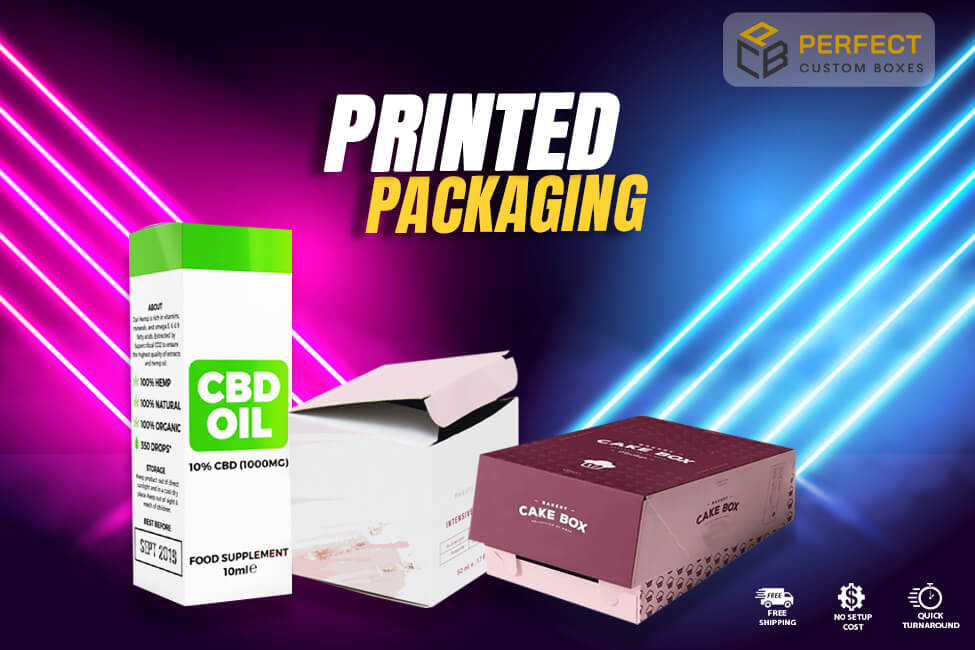
This packaging is a key element in the world of advertising and brand individuality. It serves as the original point of interaction between the products and a buyer, making it a serious tool for leaving a permanent impression. The design, color, and general aesthetic of Printed Packaging play an energetic role in passing on a brand’s message and values. It’s not just about wrapping a product; it’s about telling a story. Brands carefully select colors, fonts, and graphics that align with their ethos. These choices create an emotional connection with the consumer, influencing their perception of the product’s quality and value.
This packaging isn’t just about aesthetics; it’s also a functional tool for conveying essential information. Product details, ingredients, usage instructions, nutritional information, and legal disclaimers are all neatly presented on the packaging. This information is not only crucial for consumers’ safety and satisfaction but also legally mandated in many cases. For instance, pharmaceuticals, food products, and cosmetics must provide clear and accurate information to protect consumers. Moreover, Printed Packaging often includes barcodes and QR codes for inventory and tracking purposes, making it an essential part of the supply chain and logistics. These codes facilitate efficient stock management, reducing the risk of overstocking or understocking. As technology advances, packaging is evolving to include more interactive elements.
In recent years, there has been a significant shift towards eco-friendly and sustainable packaging. Brands are increasingly conscious of their environmental footprint, and Printed Packaging plays a crucial role in this movement. Sustainable packaging materials like recycled cardboard, biodegradable plastics, and plant-based inks are being used to minimize the environmental impact of packaging. This packaging is also instrumental in educating consumers about sustainability efforts. Labels and messages that highlight recyclability encourage reuse, or promote responsible disposal contribute to raising awareness and fostering eco-friendly behavior. As clients become more environmentally conscious, brands that prioritize sustainable packaging stand to gain a competitive edge.
Advancements in printing technology for brands to create customized and personalized packaging. Variable data printing allows for unique text, graphics, and even images to be printed on each packaging. This level of personalization can make clients feel valued and make a sense of exclusiveness. For example, a coffee company might print a client’s name on the bag they ordered online. Printed Packaging is more than just a defensive cover for goods; it’s a powerful tool for brand individuality, communication, sustainability, and personalization. It’s an ever-evolving field where esthetics, functionality, and ecological considerations intersect. As consumers continue to need more from brands, this packaging will remain a dynamic aspect of marketing.
This packaging is more than just a container to contain beauty goods; it’s a statement of style, stylishness, and brand individuality. The world of make-ups is highly modest, with countless brands vying for customers’ attention. In this crowded marketplace, Cosmetic Packaging plays a pivotal role in making an unforgettable first impression. From the instant a shopper set their eyes on the goods, they are subconsciously assessing its quality and appeal based on its packaging. Luxury cosmetics, for example, often feature sleek, simple packaging with best materials like glass or metallic textures. This not only communicates a sense of opulence but also suggests high-quality ingredients within.
While aesthetics is crucial, this packaging must also serve a functional purpose. It must protect the product from external factors like sunlight, air, and contaminants, ensuring its quality and safety. Many cosmetics contain ingredients that can degrade or become less effective when exposed to air or UV rays, making proper packaging essential. For instance, opaque, airtight containers are often used for sensitive skincare products, preserving their potency. Also, the Cosmetic Packaging design should facilitate ease of use and application. Cosmetic containers come in various forms, such as jars, pumps, tubes, and compacts, each tailored to the product type. For example, liquid foundations often come in pump bottles, allowing for precise dispensing, while lipsticks are typically housed in sleek, easy-to-use tubes.
As environmental awareness grows, the cosmetics industry is increasingly embracing sustainable packaging solutions. Brands are opting for recyclable or biodegradable materials to reduce their carbon footprint. Some are even introducing refillable packaging options, allowing customers to replenish their favorite products without the need for new containers. Sustainable packaging not only aligns with eco-conscious consumer values but also showcases a brand’s commitment to responsible business practices. Moreover, technological advancements have opened up new possibilities for Cosmetic Packaging. Smart packaging with features like RFID tags for product authentication and augmented reality apps for virtual try-ons are becoming more prevalent.